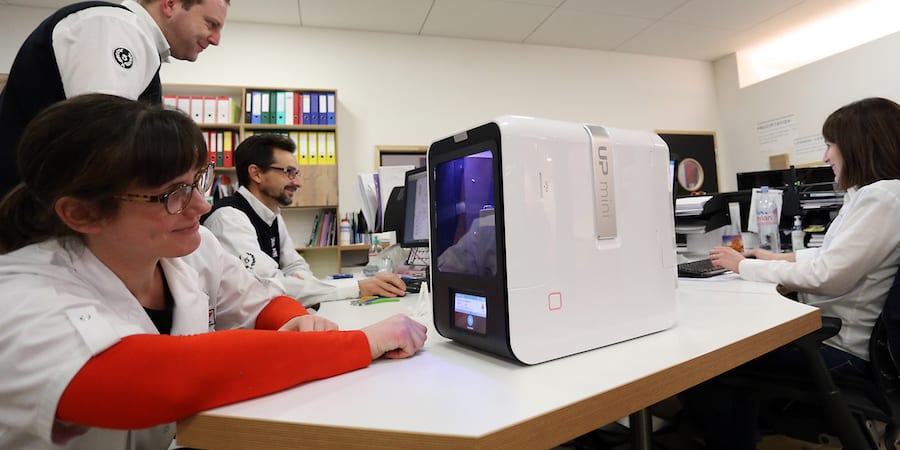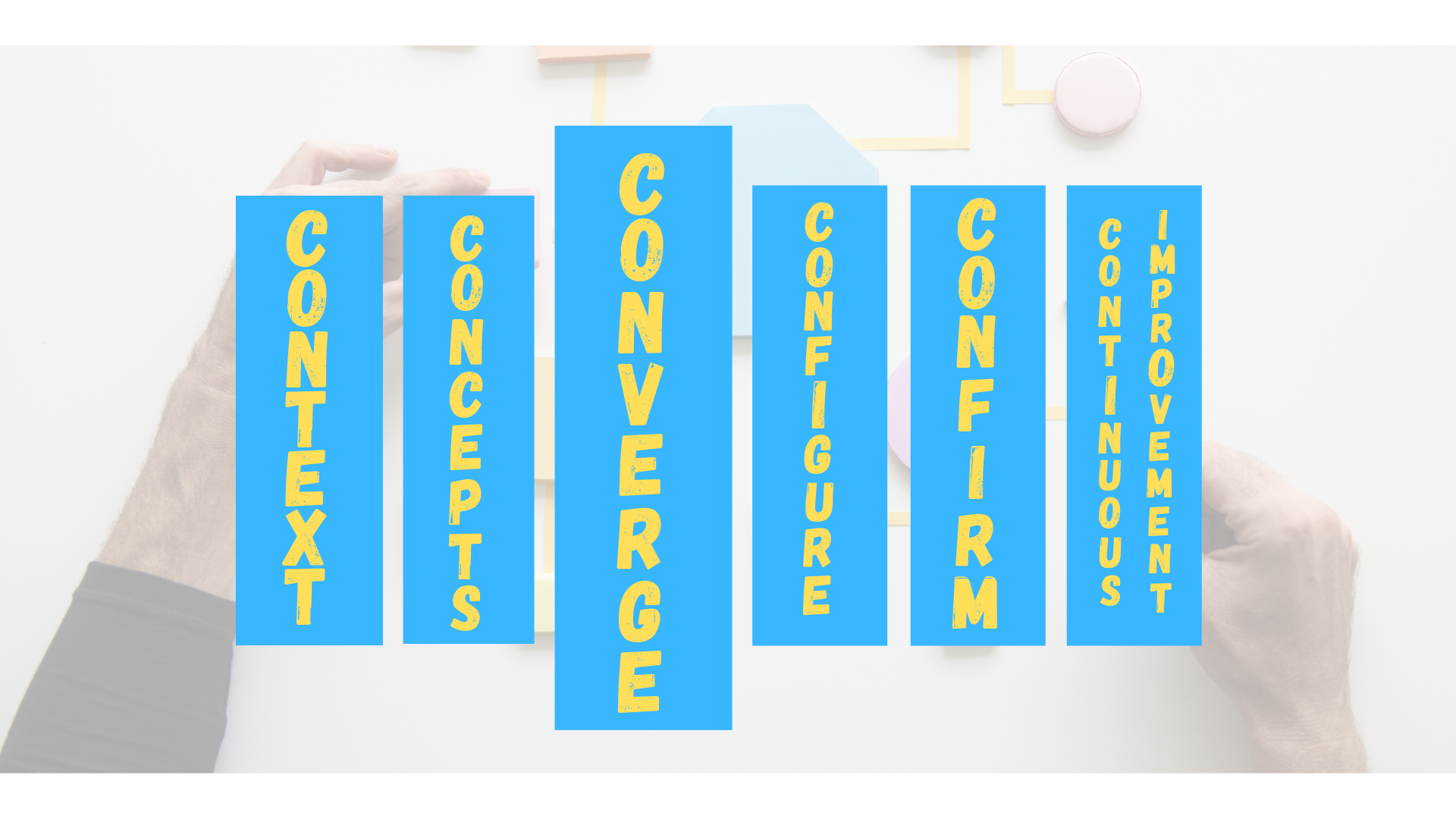
Mr Joe and the most important A3 of his life
FEATURE – This story will take you through the development of the most important A3 of Mr Joe’s life – the one meant to turn around his health and help him to live longer.
Words: Gabriel Prosofsky de Araujo, Lean Coach, Lean Institute Brasil
A3 Thinking can be applied to any human activity and to any environment. Indeed, many people use its basic elements without even knowing. In this article, we are going to follow the story of Mr Joe (in plain text), who is experiencing some health issues that are putting his life in danger. In parallel, we are going to look (in italics) at the care Mr Joe receives, organized around the structure and basic elements of an A3, to give him a long life free of the pain caused by his bad habits.
This way, we hope to understand the role of A3 Thinking in our daily lives and how using it can hugely benefit both our personal and working lives. My objective with this article is help you to learn how to create an A3 that applies to any situation you might face.
Here we go!
Mr Joe arrived at the hospital of his town at 3 in the afternoon. As of late, Joe has struggled to walk up the stairs in his house and, whenever he did, he felt fatigued. “Do you smoke?” asked his doctor during the examination. “A pack a day”, Joe replied, out of breath. “Do you exercise?” the doctor asked him. Joe’s not-so-athletic appearance made the question rather unnecessary. “Rarely”, he said, likely using a euphemism. Having cared for countless patients like Mr Joe over the year, Doctor Chris was determined to help him, knowing that we always have to expect the best but prepare ourselves for the worst. Luckily, her hospital had a lot of experience with A3 Thinking as it pertained to saving lives. She hoped Mr Joe could be another successful example. Decidedly, Doctor Chris grabbed a sheet from her notepad and a blue pen, wrote something down and handed the paper over to Mr Joe.
Does you organization face problems or aim at a target condition? What is its goal? Whatever the need – be it a crisis (either one that already exists or one we are trying to prevent), a desire for the company to reach new heights or any other problem – A3 Thinking can help you to reach your objectives and will create alignment around the urgency of its goal. A3s can also be used as communication tools. They are a form of storytelling, having a beginning, a middle section and an end. To produce them, we need to investigate the problems that relate to the objectives they set. Indeed, every field in an A3 is connected to the others.
TITLE
MAKING JOE’S LIFE LONGER, said the paper Dr Chris handed over to Joe.
“Whatever problems we might discover along the way, our goal and our worry is to make your life as long as it can possibly be,” she told him.
What is the A3 about and why? The title refers to the goal the A3 is focusing on. It’s like the cover of a book or the logo of a company. A simple phrase has to summarize the whole point of the A3.
CONTEXT
Dr Chris then said: “Before we proceed to do any kind of test, I need to ask you a few more questions.” A few minutes later, she found out that Mr Joe was 46-years-old and that he had a history of heart disease in the family, with his parents and uncles suffering from a number of heart conditions. “Brazil is one of the 10 countries in the world with the highest rates of deaths from heart conditions. Almost 30% of deaths in Brazil result from heart problems,” Dr Chris said. “Men with an average of 56 years of age are the most affected.” All of this data is revelant once we connect it to the aim of the hospital to lengthen Joe’s life.
The Context section is where the aim of the A3 is stated. It’s what gives our aim meaning and importance. We fill it with details on the situation around our aim and that will impact our decision-making. As a general rule, the context section is filled with elements that we have control over, like historical data, competitors, need to innovate, the end user’s desires, even the main indicators and strategic decisions coming from top leadership.
CURRENT STATE
After the conversation, Mr Joe was brought in for tests that would allow the doctor to perform a general assessment of his condition. As Dr Chris feared, the tests revealed problems related to Mr Joe’s smoking habit, his obesity and high blood pressure. Dr Chris also thought Joe was at a high risk of developing diabetes. The situation was not very good.
Without understanding the current state, we can’t understand the problem we are trying to solve. In this current state field, we communicate the problems and the pain points related to the aim we have just contextualized. Upon reading about the Current State, the reader has to acquire facts and data that will give her a clear picture of the pain points and how badly they are impacting the process. As a general rule, the Current State section is filled with elements that we have the power to change. The tools at our disposal to assess the current state and situational and vary greatly. Problems should be described with facts and figures – if you don’t have any, you should look for them.
OBJECTIVES
“Alright”, Dr Chris said after reading Mr Joe’s test results. “We need to define a few objectives for this patient. First of all, it’s critical that he quits smoking.” Joe knew there was no way out of this and promised the doctor he would try to give up smoking within 90 days. He also said he’d try to lose some weight. To that, Dr Chris said: “I believe we can set an objective in three steps. We will try to get you to lose 7 kilos in 90 days and to reduce your waste circumference by 20 centimeters in 180 days. We want you to lose 25 kilos in two years, and that’s our final goal.” Joe nodded in agreement.
“As for lowering your cholesterol, triglycerides and glucose levels, I believe we’ll see some positive results naturally by focusing on our goals. I don’t think we need to set specific targets for them, it would be unnecessary,” Dr Chris explained.
What specific targets do you want to achieve? It’s important to set targets that are quantifiable and with a clear time limit attached to them. All of our goals are an idealization of the future state and shouldn’t be too conservative. After all, these objectives aim to make our business viable – sometimes to ensure its survival. They should present something of a challenge to the people who will be responsible for improving things. Try to set objectives and goals that are clearly isolated from one another and that can’t interfere with one another – it will make it much easier to track them.
ANALYSIS
Why does Mr Joe suffer from all the problems highlighted in his tests? Following a series of conversations with him and his wife, Dr Chris got the idea that his eating habits were terrible. She also thought that Mr Joe likely lived a very sedentary life. In one of the interviews, he said that he played football with friends, but after carefully observing Joe’s routine, his wife noticed that he was struggling to walk up the stairs.
Why do these problems exist? The analysis of root causes is a fundamental step in the process, with the power to even change the overall scope of the A3 should it be necessary. It is in this field that the cause-effect relation of problems is described. Tools like ishikawa diagrams and 5 Whys are useful in this stage. An analysis section that is rich in information demonstrates that we have investigated problems in depth and adequately.
FUTURE STATE
Dr Chris said: “Listen, Joe, I know it is difficult right now, but imagine how great you will feel in 90 days’ time. Or in 180 days! And in two years! If you want to have a longer, healthier life, you need to act now.” Joe imagined his life without cigarettes, in good shape. He knew it wasn’t going to be easy to get there, but he also knew that’s where he wanted to get. That’s what he wanted his future to look like. Joe shook the doctor’s hand and committed to do his best to reach the future state they had envisaged.
What do you want to achieve? This is the question the future state aims to answer. We can use this section in two ways: either to plan for the Future State that will be reached once all the objectives are achieved or to establish the objectives themselves (starting from an ideal situation, a dream so to speak, and then identifying all the steps necessary to turn it into a reality). Don’t forget that this Project has to integrate seamlessly with the aim, the context, the current state and the root-cause analysis – in other words, with the entire A3.
COUNTERMEASURES
Dr Chris continued: “Let’s be clear on the details, Mr Joe. You need to know exactly what you need to do to make your life longer, hopefully by many years. That means we need to communicate clearly and get alignment to make it clear what changes in direction are necessary.”
And so, the two defined the countermeasures necessary to quit smoking, to start exercising, and to eat better. They also discussed the possibility for Joe to start taking medication to regulate his blood pressure. On this, the doctor felt insecure: “I think we made a bit of a mistake here, Joe. I think we need to set an objective specifically to regulate your blood pressure. We didn’t think about this before, but now we should add it to the list of elements we address.” Joe smiled when he realized that his doctor was not afraid to admit she had committed a mistake and to adjust her approach should she deem it necessary. At once, Joe felt at ease because he knew he was in good hands.
How do you want to reach your future state? That’s what the countermeasures tell you. This is where you describe the potential countermeasures for each of the root causes you have identified in the Analysis section. The quality of the countermeasures is directly related to the quality of the teamwork. If you find the countermeasures to be too superficial, push your team to elaborate at least five more for each root cause. This will force them to think “outside the box”. Depending on how deep and detailed the countermeasures set forth are, you might have to open new projects (which means that a second generation of A3s will have to be developed).
Don’t be scared to change any part of your A3. This is a powerful thinking process that, among other things, keeps us tied to our aim. It’s very common that upon defining a section of an A3 we have to suddenly make adjustments to the previous sections.
PLAN
After agreeing on their plan, Mr Joe and Dr Chris started to work on it. Dr Chris wrote down all of Joe’s objectives on a white board and told him that they would rethink the countermeasures and their execution in the event of any milestones being missed.
“I would add a footnote to our follow-up plan,” Dr Chris told Joe. “This is to ensure we can adapt to any changes in our plan that might occur along the way.” In the footnote, she wrote that the plan might change in the event of a diabetes diagnosis. “We will keep an eye on this,” she said in comforting tone, sensing Joe’s uncertainty about the many variables that could impact their plan.
The plan to execute countermeasures has to be solid and situational. It can include a common timeline showcasing the different milestones or simply the description of their countermeasures and their respective owners. There can also be a Kanban board for rapid countermeasures or displaying the milestones that have to be reached year after year. The important thing is to be able to track the implementation of countermeasures and that none of them simply die off along the way, considering that each of them will contribute to taking the organization to its future state.
FOLLOW-UP
“For all this to add up, we have to make it clear how Mr Joe can track the evolution of his situation,” Dr Chris thought. She told him she needed him to weigh himself, measure his waste, write down how many cigarettes he is smoking as well as his blood pressure every week and to bring all that information to his next appointment. Joe knew there was a long journey ahead of him but understood the effort would be worth it. He was about to start the most important A3 of his life, to safeguard what matters most – his health and well-being.
How do we ensure we are reaching our goals? By being rigorous in our tracking and following up activities. The Follow Up section is where we verify the effectiveness of our countermeasures against the attainment of our goals. It’s also useful in the search for any potential future restrictions we might encounter in the future and might prevent us from sustaining our results. This field is where we check the evolution of our project, preferably with graphics, to know at all times whether or not we are following the right path. Once the evolution is verified, you can share your lessons learned with other areas of the organization.

The story of Mr Joe shows us how A3 Thinking can help us to find the real causes of our problems and to develop countermeasures that can address them. When we detect symptoms of an illness (like a fever, for example), we naturally head to the hospital. There, we carry out tests to discover the cause of those symptoms (for instance, the flu) and we take action to tackle them (for example, taking medication. We would be appalled if, upon getting to the hospital with a fever, we simply received a medication to reduce the temperature without being thoroughly examined to understand the underlying causes.
In the same way, when we encounter problems in our companies, we should investigate the root causes of their symptoms (much like in a hospital, we can use a structured approach – like the 5 Whys – to get to the bottom of the issue) to then develop the right countermeasures to fight the symptoms and their underlying causes.
Many times, in the chaos of our day-to-day lives, we treat the symptoms in our organizations as the actual causes and try to fight off the fever with quick and ill-conceived solutions, without figuring out what actually happened. A3 Thinking offers a structured way to focus on the root causes of the symptoms, eliminating the problems we experience day after day rather than simply hiding them or tackling them superficially.
THE AUTHOR

Read more


WOMACK’S YOKOTEN – After a road trip from Boston to Philadelphia driving Toyota’s hydrogen fuel-cell Mirai, Jim reflects on lean and green and why the two are not necessarily the same.


FEATURE – This article (and video) explains how Michigan Medicine applied lean product and process development tools and methods to their clinical processes. A powerful experiment.


NOTES FROM THE GEMBA – This month, Catherine visits a metal injection moulding specialist and hears about the strong link between growing people’s capabilities with lean thinking and staying competitive in a complex market.


SERIES – The authors discuss the third of six elements in their process development model – Converge – using experiments to test key aspects of different ideas, while objectively working towards a single design concept slated for refinement and implementation.

